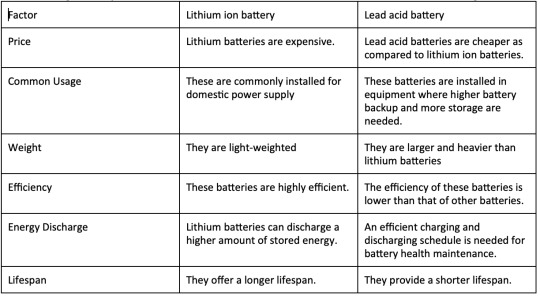#L&T
Explore tagged Tumblr posts
Text
“accidental” anal. i'm laying on my stomach and you're over me, pinning me down with your weight. your cock is pounding into my willing, wet pussy hole when it slips. there is no prep, just brute force, your hard cock, still wet from my other hole, pressing against the tight muscle, pain, then it gives in and you sink your length into my ass. you've planned this all along. you love the way my thightest hole grips your cock. how i tense and scream underneath you and you just hold me down and make me take it. you whisper your apologies into my ear as you force your cock in again and again. it just feels so good for you. you can't stop. it was just an accident, but i'm doing so well taking it. fuck, you're going to cum. you fuck me harder. accidentally.
#humiliation kink#human fleshlight#dumb slvt#bd/sm kink#dumbification#fr33use#free use kink#cnc k!nk#cnc free use#rough cnc#r@pe kink#dumb wh0re#edging kink#0rgasm denial#ruined 0rgasm#an@l wh0re#an@l only#cl1t torture#cl!t torture#painslut#pain slave#pain slvt#cvmdump
22K notes
·
View notes
Text
0 notes
Text
Unlocking L&T's Financial Excellence: A Student's Perspective
As a finance enthusiast eager to explore the nuances of corporate performance, my recent analysis of Larsen & Toubro (L&T) was nothing short of eye-opening. What began as a simple exercise in evaluating financial metrics quickly evolved into a fascinating exploration of one of India’s leading engineering and construction giants. Here’s a closer look at the insights I uncovered, going beyond the surface of financial reports.
Free Cash Flow: A Tale of Efficiency
L&T’s remarkable free cash flow (FCFF) of ₹13,813.84 Cr stood out as a testament to its operational efficiency. What makes this figure extraordinary is how it was achieved. Despite significant investments in capital expenditures (₹3,352.17 Cr), the company maintained impressive cash flow generation. This showcases the strength of L&T's business model, where operational efficiency and effective contract execution drive results.
To put it into perspective, L&T generates ₹15.2 in free cash flow for every ₹100 in revenue. This level of efficiency is exceptional, especially in the construction and engineering sector, where working capital is often heavily tied up. Their tightly managed cash conversion cycle of 65 days further highlights their operational precision.
Balancing Capital: L&T’s Financial Strategy
L&T’s financial structure reflects a thoughtful approach to managing equity and debt. With a Weighted Average Cost of Capital (WACC) of 11%, the company demonstrates an optimal blend of stability and flexibility. Maintaining an equity-heavy structure (83.33%) with a moderate reliance on debt (16.67%) allows L&T to weather uncertainties while still leveraging debt to fuel growth. This conservative yet strategic approach ensures the company remains agile and resilient.
Delivering Returns: A Shareholder-Focused Strategy
L&T’s profitability metrics paint a picture of sustained growth. With an Earnings Per Share (EPS) of ₹66.95 and a 12.3% annual increase, the company consistently generates strong returns. Their shareholder-friendly approach is further evident in their generous dividend policy. A 1700% dividend rate, amounting to ₹843.39 Cr in equity dividends, underscores their commitment to rewarding investors and reinforcing confidence in their future performance.
Future Potential: A Robust Order Book
L&T’s vast order book, valued at ₹386,200 Cr, offers a glimpse into its promising future. This diverse portfolio includes 45% from infrastructure, 18% from power, 15% from defense, and the rest spread across other sectors. Such diversification is not accidental but a well-thought-out strategy to ensure steady growth while managing risks.
Driving Innovation: Embracing Digital Transformation
One of the most exciting aspects of L&T’s journey is its investment in digital transformation. With ₹850 Cr allocated to digital initiatives, the company is leveraging technologies like AI for project management and IoT for construction optimization. These initiatives, with an expected return of 22%, place L&T at the forefront of innovation, blending engineering expertise with cutting-edge technology.
Building Responsibly: Environmental and Social Commitment
In today’s world, sustainability is key, and L&T is making strides in this area. With a carbon intensity of 45 tCO2e/Cr and a 75% waste recycling rate, they demonstrate a strong commitment to environmentally responsible practices. Their investment in Corporate Social Responsibility (CSR) initiatives, amounting to ₹150 Cr, along with an emphasis on employee development (42 training hours annually), underscores their dedication to social and environmental well-being.
A Promising Outlook
Reflecting on L&T’s performance and strategy, it’s clear that the company is poised for long-term growth. With a current market price of ₹2,180 and a projected target of ₹2,650, there’s an estimated upside potential of 21.6%. This growth trajectory is supported by their strong order book, digital advancements, and sustainability efforts.
Lessons Beyond the Classroom
Analyzing L&T’s financials has been an enriching experience, reinforcing the importance of looking beyond numbers to understand the broader narrative of strategy, execution, and growth potential. For a finance student like me, this exercise has been more than an academic task—it has been a window into the workings of a company that blends financial discipline with forward-looking strategies.
As L&T continues its journey, backed by innovation and a focus on sustainability, it stands as an inspiring example of how companies can thrive in a competitive landscape.
1 note
·
View note
Link
#AartiSrivastava#Accenture#AdityaBirlaGroup#AirIndiaExpress#AmarpreetKaurAhuja#AmritaPadda#AnjaliChatterjee#AnuradhaRazdan#ArchanaBhaskar#ArchanaShiroor#AstraZeneca#BhartiAirtel#CapgeminiIndia#ChandraBhattacharjee#Dr.Reddy'sLaboratories#GrasimIndustries#HindustanUnilever#JayanthiAnilKumar#L&T#LakshmiC#YesBank
0 notes
Text




9K notes
·
View notes
Text

Efficient Ceiling Fans for Your Business Needs at LNTSUFIN Discover top-quality ceiling fans for commercial and industrial spaces at LNTSUFIN. Our fans offer superior performance, energy efficiency, and durability. Shop with us for competitive prices and reliable service, ensuring a cool and comfortable environment for your business.
0 notes
Text
Every girl should be addicted to porn, it keeps us nice and dumb!
#slvt training#desperate wh0re#dumb slvt#an@l slvt#an@l wh0re#stupid slvt#bimboization#bimbo training#bimbo doll#bimboification#mysoginy kink#patriarchy kink#corruption kink#good slvt#edge slvt#an@l training#dumbification#dumb wh0re#daddy's good girl#bd/sm daddy#whor3#bimbofied#t!ts#objectify me#p0rno#p0rn0graphy#needy slvt#slvtty#dumbimbofication
6K notes
·
View notes
Note
how goes The Sickness?
Hi love, thanks for checking in 💜
it goes okay; I can walk around and speak in full sentences today without falling over! My hearing is wonky though. Hopefully back in business tomorrow :)
#which is good since regular life doesn’t seems to care#thank you for asking 💜#asks#💜#would not recommend being sick#0/10#l&t
1 note
·
View note
Text

We feel immense proud to announce that our supplied "Oxidation Blowers" (i.e. Energy Efficient Super Hybrid Helical Blowers) have been successfully commenced by L&T Energy-Power Team in their prestigious FGD project set up at "NTPC-Vindhyachal Super Thermal Power Plant" at Madhya Pradesh.
Our Pride lies in supplying Best-in-Class Blowers, Compressors, Vacuum pumps and related equipment’s to gas boosting/ conveying with exceptional performance, value, and impeccable service across the globe.
#manufacturer#supplier#oxidationblower#blowers#L&T#OxygenBlowers#energy#power#FlueGasDesulphurisation#SwamPneumatics#swam#swamatics
1 note
·
View note
Text
i'll take your cock in public 🩷 i'll sit on your lap in the movies 🩷 you can take my pussy in the bar 🩷 you can stick it up my ass on a crowded train 🩷 i'll suck you off on the street if my mouth is what you need 🩷 my holes are available to you whenever and wherever you want 🩷
#humiliation kink#human fleshlight#dumb slvt#bd/sm kink#dumbification#an@l only#cl1t torture#cl!t torture#painslut#pain slave#pain slvt#cvmdump#fr33use#free use kink#cnc k!nk#cnc free use#rough cnc#r@pe kink#dumb wh0re#edging kink#0rgasm denial#ruined 0rgasm#an@l wh0re
6K notes
·
View notes
Text
L&T Q3 results: Net profit rises 14% to Rs 3,359 crore, revenue up 17%
0 notes
Text

my femme and me fr
2K notes
·
View notes
Text
Battery Breakdown: Lead Acid vs. Lithium Ion Batteries
Lead acid batteries, Lithium ion batteries
Both lithium-ion and lead-acid batteries function by storing electrical energy through electrochemical processes, but they operate differently in terms of how they extract and release electrons. Lithium ion batteries function by discharging negative and positive ions from the element lithium between electrodes. On the other hand, lead acid batteries follow the same procedure but with a different material.
Apart from their different materials, these batteries also vary in performance and cost. Lead acid batteries are comparatively cheaper than lithium-ion batteries. When seeking home energy storage, you can choose from a wide range of batteries. Let’s go through a comparison of these two most commonly preferred battery options based on their usage and importance.
Lead Acid vs. Lithium Ion Batteries: Uses
Lead Acid and Lithium Ion batteries are differently crafted to serve varying applications and uses. The uses of lead acid and lithium-ion batteries are as follows:
Lead Acid Batteries
Lead acid batteries are highly used in automotive industries, offering the required power for lighting, starting, and ignition systems.
Lead acid batteries are installed to store additional energy that has been produced by renewable sources, which are later used to power businesses and homes as and when required. Hence, they are the perfect selection to store renewable energy sources as they come with easy maintenance, low prices, and longer lifespan.
Lead acid batteries are also installed to provide backup power to communication infrastructure and cell towers.
Lead acid batteries are extremely useful in marine applications, providing the needed power for communication systems, onboard lighting, and multiple electrical equipment.
Lithium Ion Batteries
Lithium batteries offer low drain current, long life, and high energy density and, hence, are used in digital cameras for effective functioning. Most DSLRs and mirrorless cameras get their power from lithium-ion batteries.
As lithium-ion batteries are rechargeable, they are highly preferred for laptops, smartphones, and other portable electronic devices.
Small lithium-ion batteries are installed in watches. With their 3 Volt capacity, they offer a longer lifespan.
Lithium-ion batteries are also used in surveillance systems and alarms in remote locations.
With the enhanced reliability and mobility technology of lithium-ion batteries, they offer fast charging, expandable run time, and size customisation in electric wheelchairs, mobility scooters, and stairlifts.
Lead Acid vs. Lithium Ion Batteries: Importance
The importance of using lead acid and lithium ion batteries for multiple power needs is listed below:
Lead Acid Batteries
The lead-acid battery's weight-to-energy ratio is relatively high. Yet, its affordability and ability to handle high surge currents make it popular for applications requiring capacity overload and handling concerns, typically above 10 Ah.
While lead-acid batteries exhibit lower energy density compared to modern rechargeable batteries, their capacity to deliver high surge currents results in a notable power-to-weight ratio for the cells.
Consequently, they have emerged as the industry standard in automotive applications, particularly as the primary power source for starting, lighting, and ignition (SLI) systems in vehicles, capable of delivering peak currents of approximately 450 amperes.
Lithium Ion Batteries
Lithium batteries offer up to ten times the lifespan of lead-acid batteries. They retain 80% of their rated capacity after 2,000 cycles. Lithium-ion batteries last longer than the average two-year lifespan of lead-acid batteries.
Lithium batteries require no active maintenance. They come with longevity on a one-time purchase.
Lithium batteries offer versatility due to their ability to charge and discharge at high rates. They minimise downtime with fast charging and provide bursts of power when needed. In contrast, lead-acid batteries require staged charging over longer periods and are less efficient during high discharge periods, making them less versatile compared to lithium batteries.
Lithium batteries excel in efficiency, particularly under high-stress conditions, as they are less affected by temperature fluctuations and energy depletion. Therefore, lithium batteries are the perfect choice for applications requiring more battery usage or operation in extreme weather conditions.
Lithium batteries offer greater energy capacity. Compared to other battery chemistries, lithium provides equivalent or greater energy in less than half the weight and size, offering increased flexibility and simplified installation.
Lead Acid vs. Lithium Ion Batteries: Major Differences
To acknowledge the major differences between Lead Acid vs. Lithium Ion Batteries, refer to the table given below:

Conclusion
Both lithium ion and lead acid batteries are used for energy storage and power supply. The applications, cost, size, and lifespan differ. Hence, before choosing the right type of battery, carefully consider the application you are purchasing for. Also, they must be bought from the best suppliers like LnTSufin who provide batteries from top brands to ensure longevity and warranty.
0 notes
